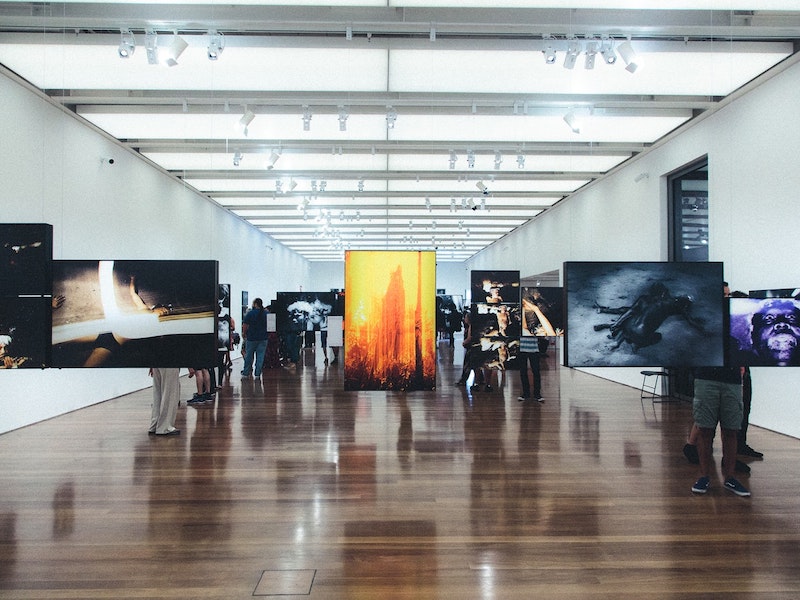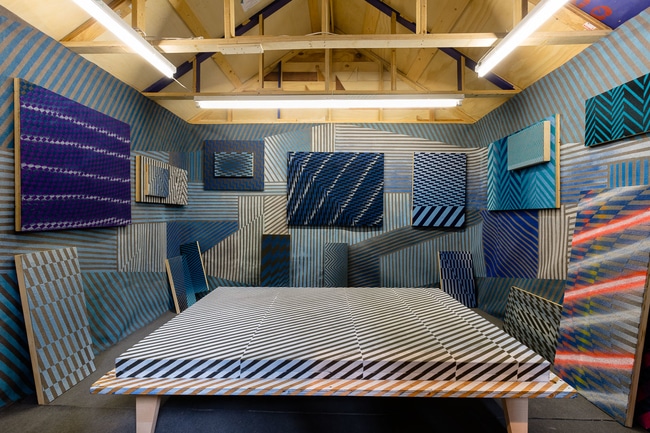“It’s another way for people to be creative. And I think that’s the best part: you can have this whole new medium to explore and have a few different media interact with each other to form something really beautiful.”
Everett Kohl is the founder of Dbilia, a digital memorabilia marketplace. Dbilia has gone beyond traditional baseball cards and t-shirts, and stepped into NFTs (non-fungible tokens). The Dblia platform has its own marketplace, and creators of all kinds can use it to create limited edition NFTs. The art world seems fascinated by the changing parameters of creation, authenticity, provenance, and ownership involved in creating and selling NFTs. Everett’s expertise in this space provides welcome insights for artists navigating the choices and opportunities involved.
Elle Thompson: Hi Everett, I’m Elle, and I’m working with The Clark Hulings Foundation for Visual Artists. It’s really exciting to get the chance to talk to you today. You’re a business person and content creator around NFTs and blockchain in general. How did you get started in this market?
Everett Kohl: I’ve been a fan of content creators for a long time. I spent a lot of my youth on YouTube, and I started to see creators selling merch—T-shirts and mugs—and I thought that couldn’t be the most efficient way for creators to earn money and get brand recognition; there has to be a better way. I was a fan of trading cards when I was young, and collected quite a few. So I combined the two ideas: what if creators made trading cards that could act as a better investment than a t-shirt, and were digital for GenZs? I added my knowledge of Blockchain, and merged those two together to use NFTs for creators to monetize their brands. I thought NFTs would be a perfect technology for the vision I had, and I started building the platform.
What got me started was my knowledge of the space as well as just loving creators, understanding what they do, and wanting to build something to support them.
ET: That sounds wonderful. What appeals to you about the NFT space?
EK: The concept of ownership of digital rights is interesting. With NFTs, you can sell the ownership rights to a creation (a video for example) to the public. True digital ownership allows you to turn things that couldn’t otherwise be a collectible into something that can now be owned as a collectible—which may then increase in value.
We’re working on the environmental impact side. There are NFTs that take a lot of energy to create, but creating an NFT is not as environmentally harmful as creating a t-shirt. With NFTs, we’re able to move merch and collectibles away from being physical objects.
When I was doing research to launch Dbilia, there were so many people buying collectibles or clothing just for one Instagram post. It was such a waste, environmentally speaking. With NFTs, we take something physical and turn it into a digital asset. Creators could just skip the creation of the physical object and go straight to a digital asset, and save the environment by having fewer steps.
ET: I actually wanted to ask about that; you mentioned the controversy about blockchain and its impact on power sources. I was going to ask why those computer processes take up so much bandwidth, but I also wanted to ask how blockchain could avoid having that environmental impact.
EK: It comes down to how Blockchain mining works to validate, confirm and reach consensus for each transaction of a digital currency. I studied Computer Science and Geography, so a lot of my background is in environmental studies. As GenZs, we care deeply about the environment. There is a lot of energy use with NFTs but there are also alternatives that do not necessarily consume the same level of energy. We are focusing on these alternatives.
ET: I love the forward-thinking nature of your company, Dbilia, and your business in general. Would you be able to walk us through how you buy an NFT and how that process works?
EK: Today the most popular way of buying an NFT is complicated. The steps involve:
- The first step is to open a digital currency wallet because that’s how you actually hold the NFT.
- Next, you open an account with a licensed digital currency exchange to be able to buy the digital currency you are using.
- Then you have to download software such as MetaMask that allows you to transfer the digital currency to other apps. After that, you transfer your digital currencies to MetaMask.
- Finally, you can go to an NFT platform and purchase an NFT.
This is a pretty lengthy and difficult thing for most people to do, especially if you’re not familiar with the technology. Even if you are, it still takes a while to set up. What we’re looking to do at Dibilia is make it friction-free and have it all in one place with a credit card that’s stored for you. You’d just go to a site, see what you like, click purchase, and the process is exactly the same as any other online shopping. I think we’ll start to see a lot more people get excited about NFTs.
ET: So you’ve mentioned your company Dbilia, which is working to speed up that process. Could you talk about how Dbilia works, and your goals for that?
EK: Dbilia allows people to use payment methods instead of digital currencies to buy an NFT. Our goal is accessibility and a friction-free process. We want it to be easy for people to come in, use the site and buy an NFT easily with a positive customer journey.
ET: The art world is currently interested in blockchain. What kind of opportunities can NFTs provide for artists?
EK: With NFTs, all types of art from performance art, paintings, photography, music, videos—can be rendered digitally as an NFT and sold to fans, collectors, and supporters. Voice as an expression of art now can be NFT-ified. You can even have a physical piece of artwork have a QR code that represents a digital version of it. You can have those two interact with each other.
There’s a lot of creativity in the space. When I talk to artists, they love the idea of having a new vehicle to showcase their talent and monetize their work. There are people looking to invest in artists in the NFT space. Monetizing is a huge opportunity for these artists, and the chance to get your name out there and develop a fan base.
ET: That sounds lovely. So how do you see NFTs changing the existing structure of the art world?
EK: I’ve talked to art gallery owners and they’ve thought about bringing NFTs into their space. So instead of just having everything be physical, they can set up screens in their galleries and display digital art that way. There are also NFTs that use the Blockchain to track physical art, and so tokenizing physical art is something that we’re seeing. That’s exciting for the entire art space. There are many things that artists can do with NFT technology.
ET: How could those opportunities be profitable for artists rather than just being profitable for art collectors or art galleries?
EK: The biggest example we’ve seen is the Beeple sale of an NFT at Christie’s for $69 million. It’s safe to say that it was profitable for him. I’m not saying that’s repeatable for many people, but there are people buying NFTs because they see it as an asset class that’s going to grow into the future and possibly increases in value.
Digital art using NFTs gives artists accessibility. It opens up new opportunities for artists and their buyers by creating a new market that didn’t exist before. Not only that, because it’s online, but because this whole world is a new market for artists. Coupled with the fact that the creation costs are so much less than physical art, it can really change the ecosystem for artists.
ET: What potential challenges could you see for artists in working with NFTs?
EK: We talked about how hard it is for people to start collecting NFTs. It’s equally, if not more difficult, for artists to sell NFTs. That’s something that we’re looking to fix. Our goal is to make it easy to open an NFT account and sell NFTs as an artist.
ET: Do you have any other things that you wanted to talk about in this interview, major takeaways that you’d like people to have?
EK: NFTs are very new and we are just beginning to see the impacts and use cases. We’re excited to be on this journey and to have been in the NFT space early. We would impress upon people that NFTs are going to grow in use and use cases, and we’re excited that the innovation in the space is growing so fast and is being supported.
Elle Thompson: Awesome. All right. Thank you so much for this interview, Everett. It was lovely to meet and talk to you!
Everett Kohl: Thank you!







